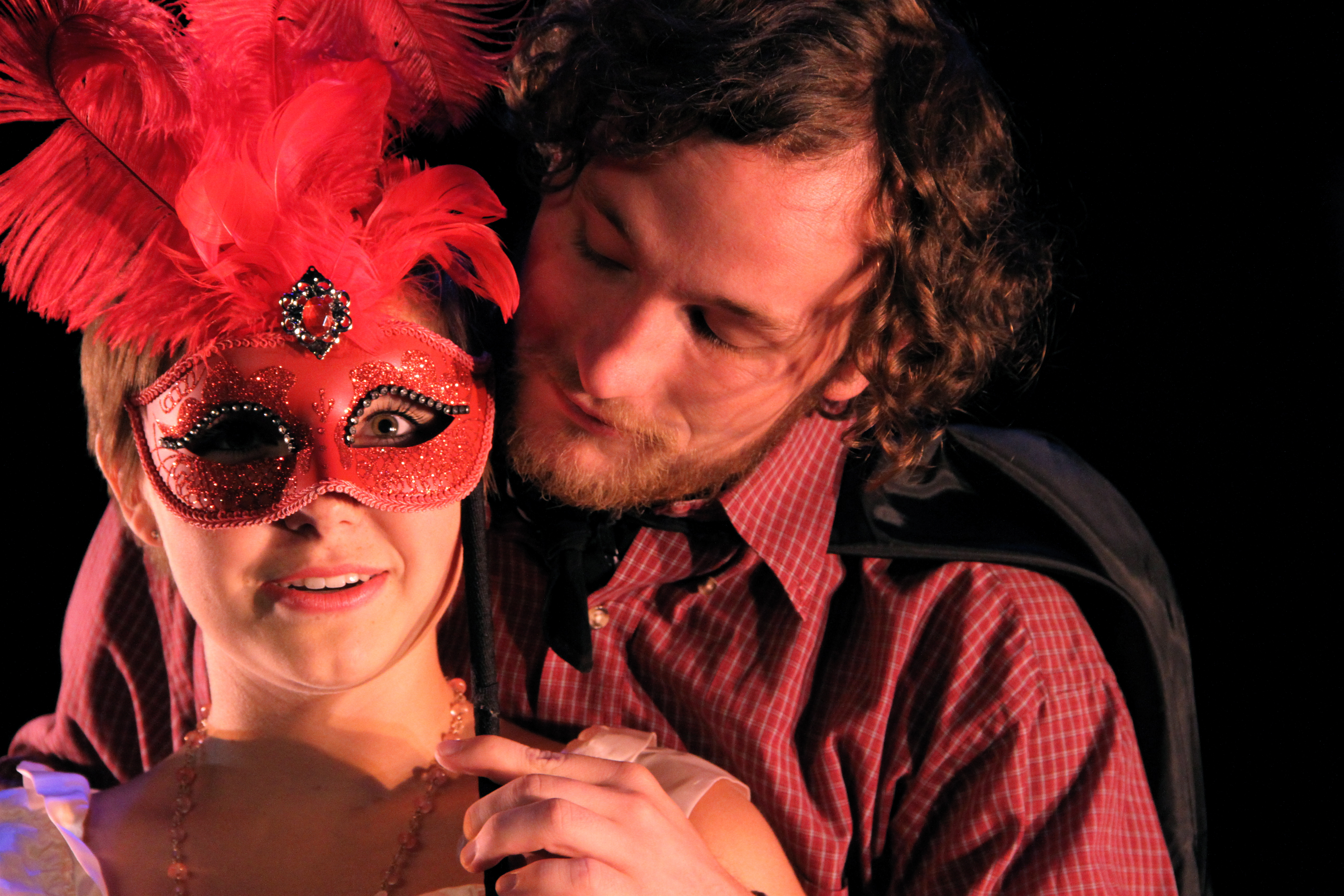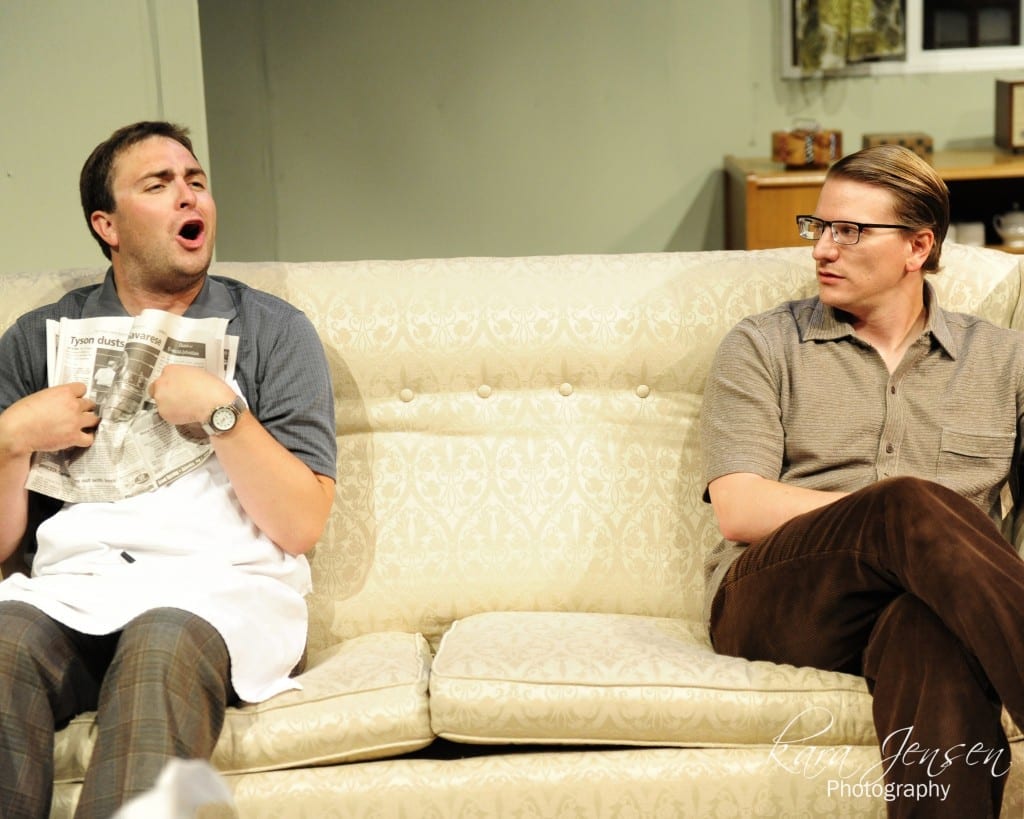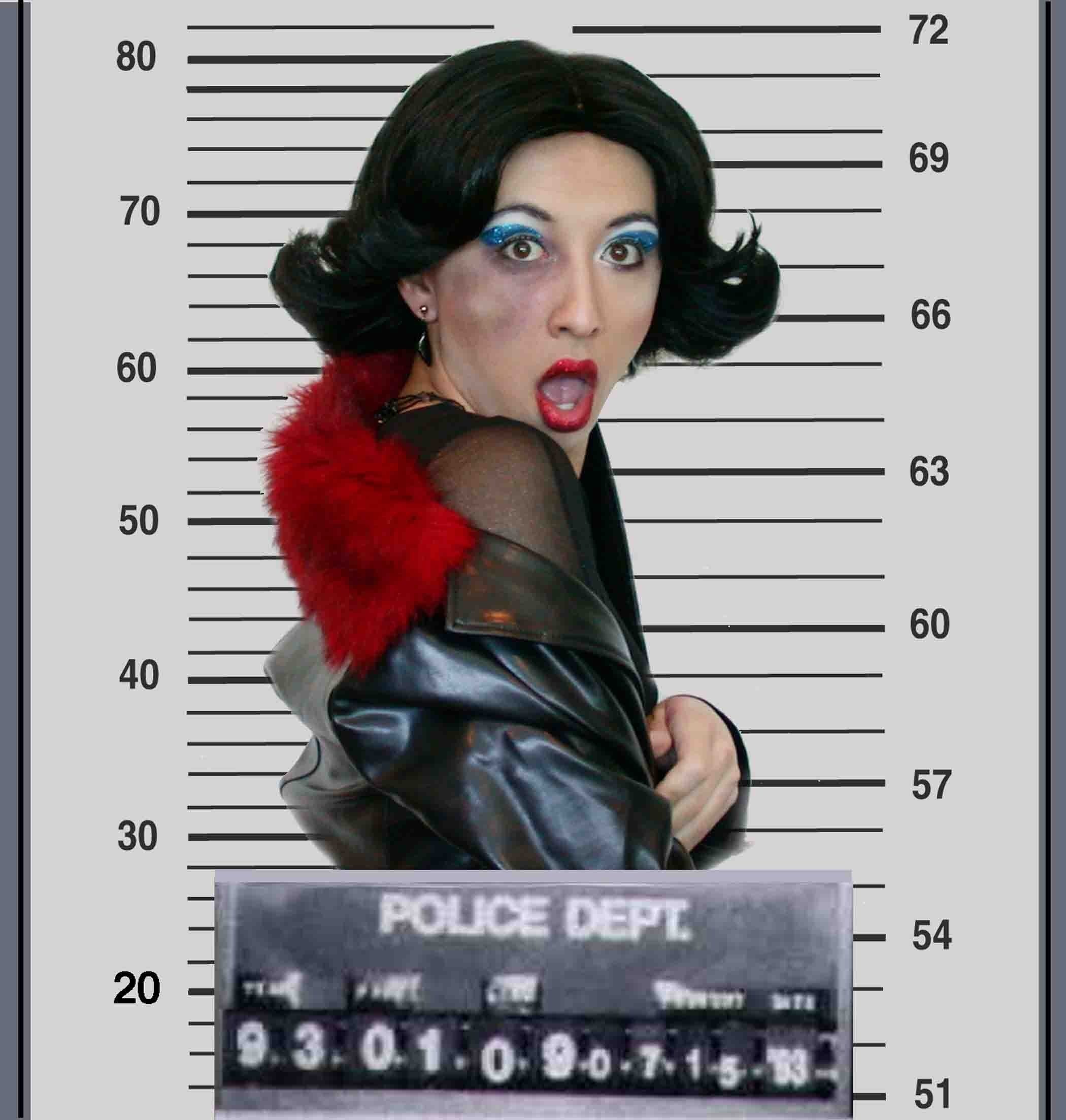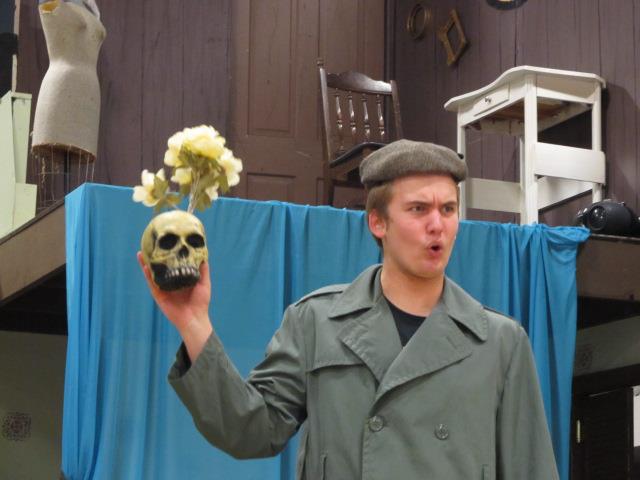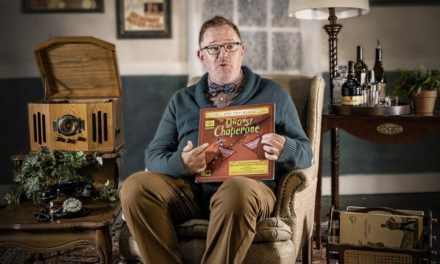PROVO — There’s something exciting about seeing a show I’ve never seen in a theater I’ve never frequented. I reminded myself of both facts as I drove an hour from West Valley City to Provo to see the Covey Center for the Arts’s production of The Fantasticks. Credited as the world’s longest running musical, The Fantasticks follows two next door neighbors who, manipulated by the staged feud of their fathers, become sweethearts. But happy ever after doesn’t play out as expected, and the young lovers are forced to reevaluate their commitment. Written in part poetry and part prose, the book and lyrics by Tom Jones combine wit and wordplay. And, like a dissonant chord finding its resolution, Harvey Schmidt‘s piano lounge jazz score both contrasts and completes the easy feel of the show.

Marissa Scout Smith and Ben Isaacs. Show closes August 11, 2012.
Directed by Bergen Goesch, this production was staged in the black box theater at the Covey Center for the Arts. A sheet painted with The Fantasticks logo was displayed prominently, blocking the view of the simple set which, when revealed, consisted of a small platform stage with a tall post at each corner, and two chairs. Noelle Houston, cast as The Mute, manipulated additional props to create scenery as needed, most notably acting as the wall between the neighboring homes. Houston’s facial expressions and lighting designed by Goesch reflected the mood in each scene, and I found myself frequently looking toward Houston to see her portrayal of each emotion. For me, she was the most captivating when she held entirely still.
The comedic moments in the production were frequent and flawless, supported simultaneously by dialogue, timing, movement, and mood. At many points including the fight scenes, lighting changes were used to support the actors comedic timing. Additionally, the lines were delivered in an understated way, allowing the wordplay to speak for itself. Marissa Scout Smith (The Girl) often punctuated her humorous lines with an even more humorous facial expression, and both Moises B. Lopez (The Old Actor) and Alexander Trop (The Man Who Dies) used physical movement to support their dialogue. Transitions in and out of songs were seamless as Emily Dance Fish’s choreography was every bit as funny as the simultaneous song lyrics.
Much attention was paid to the details in this production. Fight scenes between The Boy (Ted Bushman), The Narrator (Ben Isaacs), Lopez, and Trop were as skilled as they were funny, featuring deliberate moments of swordplay choreographed by Isaacs. During “Soon It’s Gonna Rain,” Houston used a section of sheet metal to create the sound of thunder. This sound effect simultaneously enhanced both the scene and Houston’s character, and I enjoyed the creative sound effect. Isaacs played the guitar during “Try to Remember,” and his live performance was effective in bringing me immediately into the story.

Marissa Scout Smith.
Bushman delivered his performance of The Boy with practiced consistency. Elements of his character, such as his tendency to cycle through the fingers of his left hand, continued from scene to scene, used in different ways to portray a variety of emotions. This movement became the most concentrated upon his return from seeing the world, and it was apparent in the change of motion that his character had undergone a change.
Vocally, each cast member was as strong as the next with song after song delivered without complication. In particular, I enjoyed songs between Andrew Whittaker (The Boy’s Father) and Andrew Foree (The Girl’s Father) as their voices seemed well-matched in both dynamics and style. Their harmonies during “Never Say No” seemed effortless, which allowed me to focus on the song’s humor. In general, the harmonies were well balanced, especially during the duets. However, when the entire company would sing, Smith’s harmonies would occasionally get lost among her male counterparts’ vocal lines. I often found myself listening specifically for her voice, and sometimes not finding it.
The live piano accompaniment was a great choice for the black box stage; I only wished the quiet moments could have been a little quieter. The digital piano was a little too loud, especially when used for underscoring during dialogue. Instead of enhancing the emotions of the scene, in some cases the piano ended up being a distraction. However, Joseph Allred Olson played the challenging score nearly flawlessly and followed the tempos of the actors despite not being able to see the action on the stage.
What ended up as a polished performance started out with an uncomfortable stretch of time for many audience members. Lopez and Trop came out to make the theater’s announcements and left for backstage. Though the lights didn’t dim and the show didn’t start, the audience sat still and silent for several moments. I began to hear several audience members whisper to their neighbors, “Is it starting? Are we supposed to be quiet still? Maybe they still need to put on their costumes?”
Eventually, the conversations returned to the pre-announcement din. When the show did start, I continued in my confusion as the actors walked across the stage, seemingly still preparing for the production. As Smith walked across in only one shoe, purportedly attempting to add the other, I was concerned I might regret my long commute to the show. Since it was performed during the overture, I am not certain if this charade is written into the script. In retrospect, it did not take away from what I considered to be a great performance. But I also didn’t think it added anything of value, and I never quite understood why it had ever happened. By the curtain call, I was still left wondering what the strange start was all about.
I will caution those who choose to see The Fantasticks that the catchy tunes will likely be stuck in your head for several days. But if you can handle that, the show is well worth the drive to Provo and the price of a $12 ticket. Young children may not catch the humor, but I would recommend this production to anyone who is ready to think a little and laugh a lot. All in all, this production is fantastic.

